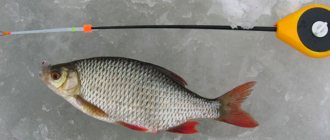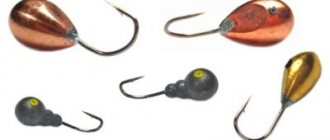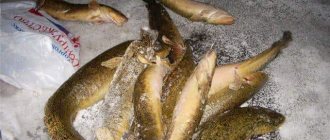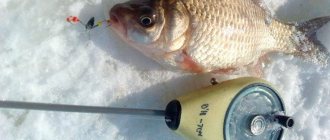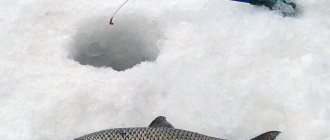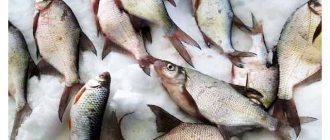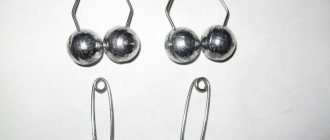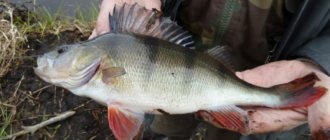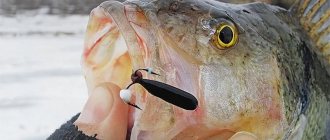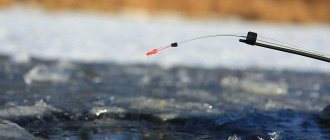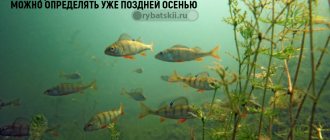Avid fishermen bring a rich catch even in winter. Since most fish hibernate at this time, the roach helps out - it continues to be active. But the process of its extraction is not so simple. Sorog can be caught effectively in winter if you use the best ice fishing jigs and other lures. It is important to know which tackle has the best bite. You also need to figure out how to equip your fishing rod and other gear. These and other nuances will be discussed in the article.
Winter catch of sorog
When is the bite better at night or during the day?
Fishermen note that in large bodies of water, winter fishing is most productive at night. Therefore, in such places, entire fishing towns grow up from tents that glow with lights in the night. Greater sorog and ram bite better in the dark, but this is not a pattern. If fishing occurs during the day, then sometimes it is necessary to shade the hole with something (a piece of cardboard or plastic) so as not to spook the fish with light. And sometimes, on the contrary, light attracts fish.
In this regard, the fisherman is guided by his own practical experience or advice from like-minded people on his hobby. If you plan to go fishing at night, you need to arrive at the site early in the morning and set up a tent. The main thing is to find the flock before dark.
What time of day is the bite best?
Fishing is successful throughout the whole day, but is more active in the morning before lunch and in the evening, two hours before dusk. In a well-fed hole, fishing can last until night. So even in a snowy winter, although it is not easy, it is possible to reel in a decent catch.
Twilight over the ice hole is a necessary condition for winter fishing. To create shade, tents or huts are erected. The bite in winter is stable. Only during severe frosts and piercing winds does the fish not give in. The hole can also be covered with a piece of plywood to protect it from light that frightens the fish.
This is interesting: Hunting for a hare with greyhounds
Roach is very sensitive to weather changes . On sunny days, it migrates into the pond in large flocks, but already in mid-December to early February it becomes sluggish, almost motionless, and all the proposed bait does not impress it. You need to try to throw the bait right under her nose or “seduce” her by playing with the bait.
Fishing place
The winter catch of sorog depends greatly on the location of the fisherman. The roach's habitat is not so easy to find. The uniqueness of this fish lies in the absence of established habits. She constantly migrates and explores new territories. At the same time, it splits into flocks of different ages. If only small things are caught from one hole, you need to move a few meters and try (in this way they look for where the prey is hiding).
It is also impossible to predict in advance the depth of the fish's dive. Usually, when cold weather sets in, it goes to a depth of 6 meters, away from the coastline. And in consistently clear and calm weather, it is actively distributed over the entire area of the reservoir. Therefore, fishermen have to wait for the prey to be attracted by feeding. It is impossible to find the sorog in water depleted of oxygen - shallow muddy pools.
At the beginning of the winter season, the sorog gathers mainly in bays and former river channels (oxbow lakes). It does not go where there is a current - it will group nearby. Also, the track is not found in places with a sandy bottom, where there is no food.
It would be smart to mark it when you find a good place. Then next year you can return there.
On small rivers, it is recommended to fish in backwaters - where they are shallow. Some fishermen in winter quite successfully catch roach in the reeds, near a fallen tree. But with this method there is a risk that the spinner will get caught. Fish activity lasts longest in ponds and large reservoirs. Even in the dead of winter, you can safely go there and the catch will be guaranteed. Only the pond sorog is not particularly fond of bait.
Places where roaches accumulate in winter
Tackle for catching sorogi in winter on the current
For a rich catch, you need to choose the right gear. What is meant here is:
- rod;
- fishing line;
- floats;
- jigs;
- leash.
The success of fishing largely depends on the gear
Rod
Winter tackle for sorog necessarily includes a fishing rod. It’s better to stick with those with a handle and legs. When choosing a stationary structure, you do not need to worry about its weight. Some anglers make their own rods.
What types of fishing rods are there:
- standard with handle;
- closed and open balalaikas;
- fillies.
It is advisable to use a reel with a lock (it has more advantages compared to inertial ones). Then it is easier to pull out a big fish. The maximum length of such a coil is 1000 meters.
Types of fishing rods
fishing line
Typically, monofilament fishing line is used to catch roach in winter. It is no more than 0.18 mm thick. It should not be white, otherwise it will blend in with the snow and ice. Another significant detail is the presence of a bright and large nod with good sensitivity.
It makes no sense to take a thicker fishing line (from 0.2 mm), even if you intend to catch large fish. But it’s a good idea to take more fishing line with you when fishing, since the sorog often goes quite deep. Usually 15 meters is enough.
It is not advisable to buy thick fishing line, even for a large trail
Leash
A fishing rod with floats is equipped with two leashes. One sinks to the bottom, the other remains in the middle water layers. This technique increases the chances of attracting roach at any level of its movement. Another plus is the ability to attach two different baits at once.
The sinker is selected depending on the strength of the current. Its mass varies from 0.01 to 0.04 kg. It is customary to attach worms to hook No. 12, and bloodworms to No. 18. Mount the tackle according to the paternoster scheme:
- The edge of the main line is tied into a loop with a diameter of up to 40 cm.
- The loop is cut so that one end is about 2/3 longer than the other.
- A swivel with a carbine is tied to the short end, to which the weight is fixed.
- The long part of the fishing line is put under a leash in the form of a loop-like harness.
Fishing rod rigging diagram
If the water is still, you can fish with a tackle with a float without using a bloodworm or with a combination of a jig and a nod. They are identical in functionality, but each has its own settings. The rewinder should be as sensitive as possible and the thinner the better (since it will have to be held in your hands for quite a long time). In case of intense current, use a diverting leash - a rod with a reinforced nod.
This is what a fishing rod looks like for rivers with a current
Any jig will do. They are chosen by the fisherman at his own discretion, based on practical experience. Usually, in winter, the sorog bites well on models in the form of drops, oatmeal or pellets. For greater depths, you need to buy weighted tungsten versions.
Types of jigs for roach
If a standard baitless bait does not produce results, you can attach a bloodworm to the hook - the live bait will make the artificial one more tempting.
Float
Winter float rod
In winter, the best bite occurs on a float rod, but when the fisherman is passive. Active fishing (moving around a body of water and using various tactics) involves the use of a jig with a nozzle or reelless gear. Floats are selected individually by each individual. But most anglers prefer the following models:
- with a longitudinal through channel, which are held on a fishing line by a whip antenna;
- petals that open when pecked;
- petals attached to cambrics;
- two-part, which close when a fish hits the hook.
Winter gear is mounted so that the float is immersed under the ice by 1 cm or more. If there is a current at the chosen fishing spot, an overload is required. Then the tackle will be held in a specific area.
Gear installation diagram
Fishing rod and jigs
A fishing rod with a nod has a fragile structure, taking into account the small size of the fish, the volume of the mouth and the behavior when biting. The body is made of heat-conducting material, allowing you to feel the bait with your bare hands, without gloves.
Expert opinion
Makarov Igor Tarasovich
Hunter and fisherman with 20 years of experience. Wildlife lover
When choosing a model, you can highlight the so-called balalaika. The reel with a supply of fishing line is housed in a round foam casing. The supply of fishing line allows you to fish at different depths and shallow waters, without reeling in you can move it through the snow from one hole to another.
Video with successful footage of catching a wolffish using a jig:
The optimal diameter of the forest is 0.05-0.10 mm, and the colorless one is 0.08 mm. The length of the whip itself, which acts as a shock absorber, is 13-17 cm. The nod is the most sensitive part of the fishing rod, light but quite elastic. Serves as a bite alarm and sets the bait game. The nod is made from boar hair, lavsan, metal plates and other materials.
Mormyshki come in the form of drops, oatmeal and pellets. At great depths, heavy tungsten jigs are used. A more suitable color for artificial bait is black or dark green.
Mormyshka “Goat”
Roach can be caught in winter both with a reelless bait and with the use of live baits . Cambrics of yellow, red and blue colors are often attached to hooks. Different forms are used: “goat”, “ant”. multi-colored beads attached to a fishing line . A very good combination - black-white-black.
Jigs “Ant”
Mormyshka “Cat's eye”
Please note: in the next video the man is actively pulling roach after roach onto a jig with a so-called ball (round bead). This jig is called "cat's eye" . You can read a detailed review of the “Cat's Eye” jig, which describes what and how it bites.
Fishing technique
Got a fish!
We catch a track in winter using game tactics:
- Slowly, without sudden movements, we plunge the jig to the very bottom. Then, just as slowly, we raise it about 5 cm and freeze for a couple of seconds.
- Then we lower and raise again. As a result, the nod swings.
- Now we lower the jig to the bottom and pull it up 25-30 cm, while achieving intense vibrations.
- Again we slowly immerse it to the bottom and hold it there without the slightest movement. Next, we begin to stir slowly.
- When lifting the jig up, we make small jerks and swing the fishing rod to the sides. At the desired depth, we stop for a while and move the jig.
- After lifting, we quickly lower the jig to the ground and knock several times to muddy the water and attract fish.
- We pull in the bait, gradually increasing speed. With each change of pace, we freeze for 1 second.
In a game like this, it is important to maintain a certain pace and take short breaks. The technique for catching roach with bait can be different - it requires a creative approach from the fisherman. You can take the proposed option as a basis and use your own.
It is recommended to watch a video on how to finish a track in winter:
Another method used in winter for catching sorog in reservoirs with a current is by rolling. The technique is quite primitive, so even a beginner can handle it. The photo below shows how the tackle works.
Tackle type "rolling"
The point is this:
- We plunge the sinker into the hole all the way to the ground of the reservoir. We wait until it calms down and fixes itself.
- Then the flow of water picks it up and begins to move it along the bottom. It will be necessary to increase the length of the line by 2 meters so that the load can move away from the hole.
- We stop the sliding sinker and pull it by waving our hand - first we do it smoothly, then sharply.
- We return the tail to its original position and repeat all the maneuvers in the same order.
This approach shows good results, as can be seen in the video:
Bait selection
Roach prefer natural bait. The best bite occurs with a jig, and dung worms are sometimes more productive than bloodworms.
By type of nozzle there are:
- vegetable (used in stagnant waters) - bakery products, steamed grain, eggs;
- animals (for fishing in water with a current) - bloodworms, maggots, cow udders, worms, lard.
The main thing is that the semolina is fresh. A fleshy live worm is sure to attract roaches.
Many people successfully fish with dough that they make at home. It consists of garlic, baked milk, salt and sugar, flour.
To catch big fish you definitely need a jig. The choice of its color depends on a number of factors: depth, lighting and type of attachment. Typically, the sorog reacts to golden or silver decoys (there are exceptions when prey is attracted to other tones). Therefore, the fisherman should stock up on multi-colored products and see on the spot what is suitable.
It is worth considering that lead products are good for medium depth layers. Tungsten accessories allow you to get fish almost from the very bottom. But phosphorus solutions are only suitable for water layers with a minimum of light.
Lure
Equally important is proper feeding of roach. Many winter roads are sure that fish respond worse to industrial mixtures - this is not true. You can find many effective compounds on sale, but they are not cheap. In addition, the sorog becomes more capricious in winter and on a particular body of water gives preference to a certain smell and taste of bait, and rejects any other.
For this reason, it is often necessary to change complementary foods directly at the fishing site. It would not be a bad idea to first consult with fishermen who often visit the place where you plan to go. Based on reviews from experienced fishermen, it is more effective to use millet (it is first boiled or steamed). You can try making corn porridge.
When cooking porridge, do not bring it to full readiness. Then rinse in cold tap water so that the grains do not stick together.
Porridge to attract sorogi to the reservoir
Other complementary feeding options:
- semolina;
- chopped peas;
- breadcrumbs;
- baking powder;
- Wheat flour;
- powdered milk.
It is permissible to use flavorings, but in maximum doses. Recommended ones include cumin, vanilla, dill, vegetable oil (unrefined), paprika.
The influence of weather on the bite
The roach bite in winter is unstable. There may be several reasons:
- weather;
- presence of underwater currents;
- water temperature;
- oxygen level;
- Atmosphere pressure.
It has been noticed that fishing is most catchy when the weather is consistently good, without sudden changes.
Atmosphere pressure
The well-being of roaches is not affected in any way by atmospheric pressure. Whether it is low or high, the behavior of the fish is the same. The only thing is that with a change in pressure in the atmosphere, the conditions directly in the reservoir change, and the feeding cycles shift. Therefore, the fish does not have time to adapt to new circumstances, which sometimes negatively affects the quality of the catch. Check the atmospheric pressure on the barometer.
What winter weather is the best for biting?
The best bite in winter is observed in consistently clear and calm weather. The main thing is that there are no spontaneous surges in pressure and temperature. It is acceptable when weather conditions change gradually.
Wind influence
But the wind affects the bite. In very windy weather, the fish loses activity and stops responding to the bait. This is more relevant for large-scale reservoirs. For a good bite you need peace and quiet. Other manifestations, such as thaw or frost, do not play a significant role.
How to make a jig at home
There is a fairly unpretentious method of making a bait from a thin brass tube, the thin walls of which are easy to process. Using a hacksaw for metal, it is not difficult to saw off several rings of varying heights. The tubes are processed until they are given the required shape, a hook is inserted, and the cavity is filled with lead.
It is not difficult to make analogues of the most catchy jigs, for example, the same feature that roach is so partial to.
To make it you will need a minimum set of tools and materials:
Lead dismantled from the lower edge of a Chinese fishing net is suitable as a load. To make a ring in the upper part with a hook, you need to hook the eye of the tee. Then the tee must be inserted into the hole in the weight. This must be done in such a way that the ring sticks out.
The sinker is compressed with pliers, and the excess part of the hook is bitten off. The homemade product is carefully processed with a file until the desired cone-shaped shape is obtained. The mothless is ready. To increase bites, a cambric or bead is strung on the hook. It is not necessary to paint it, since it is already dark in color.
Another version of the simplest jig. According to the size of the forend required, cut the cambric of the desired color.
The eye of the hook can be left unchanged, or it can be bent to the side. A wire is taken, the cross-section of which must coincide with the internal diameter of the cambric.
The tube is strung on a hook, then it is rigidly fixed with wire. The knot is coated with glue.
If you put several shorter tubes of different colors, you get a composite bait.
The third method of making this equipment element yourself is to wind several layers of copper or brass wire with a cross-section of 0.3 mm onto a hook. It should be noted that the roach reacts quite readily to such homemade products, since when playing they are located in a vertical plane.
This is interesting: Hunting upland game: hazel grouse, black grouse, partridge and others
To make it more attractive, place a bead on the hook.
Dependence of bite by month
Ice fishing varies depending on the month of winter. Thus, catching roach on the first ice is completely different than during the deep winter or early spring. Also, it is impossible to compare the production of sorozhka in the North and roach on the Volga River. The behavior of fish varies, which is influenced by time and place.
Despite this, it is possible to identify general trends in the relationship between the bite and the time of year.
First ice
Catching roach on newly formed ice occurs in shallow areas and in the same places as in summer. It happens that the fish begins to bite 20-30 cm from the surface, near the coastline, where there are dense thickets. However, the sorog gradually migrates further and deeper.
Where to look for sorog in December
By December, reservoirs are covered with a fairly strong ice coating, especially towards the last days of the month. By this time, the roach groups into schools and settles in a specific wintering area. Here you will need all the skill of a fisherman to find the prey.
Finding a place in winter
Many fishermen find it difficult to determine the exact place to catch roach. Unfamiliar surroundings take longer than the process itself. With the appearance of ice, it is difficult to determine the course of rivers and the exact depths.
The search for a suitable place should be based on facts; it is possible to use an echo sounder, which will increase the time for the main fishing.
In winter, roach moves from shallow depths to fishing holes. Fish can feed in shallow water on the remains of underwater plants. Individuals gather in flocks and begin to feed en masse.
Finding such a place will not be difficult if you pay attention to the protruding snags and bushy reeds from the ice cover.
Closer to February, in the midst of persistent frosts, roaches may become less active. It lacks oxygen due to decaying aquatic plants. Therefore, fish migrate in large schools to deeper areas of water resources. It should be looked for in muddy pools and wintering pits with a depth of at least 5-7 meters.
Expert opinion
Makarov Igor Tarasovich
Hunter and fisherman with 20 years of experience. Wildlife lover
If you fish on rivers, then you should look for fish in the riverbeds where there is bank vegetation. The roach looks for places where there are underwater springs, streams and flowing springs. There, individuals circle due to the proper amount of oxygen.
On shallow and small rivers, this individual is searched for in pools with a reverse current. The fish compensates for the lack of oxygen; it spends less energy for wintering.
For experienced fishermen, we would like to remind you that the search for a place is stored in memory in the summer. You must memorize summer fishing trips and note noticeable differences in order to catch tasty fish in winter.
This applies to those who do not change their accustomed area. For beginners, memorization may not be useful.
